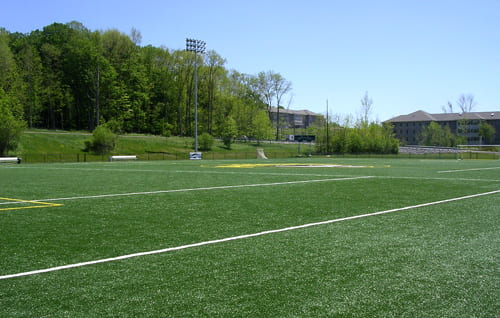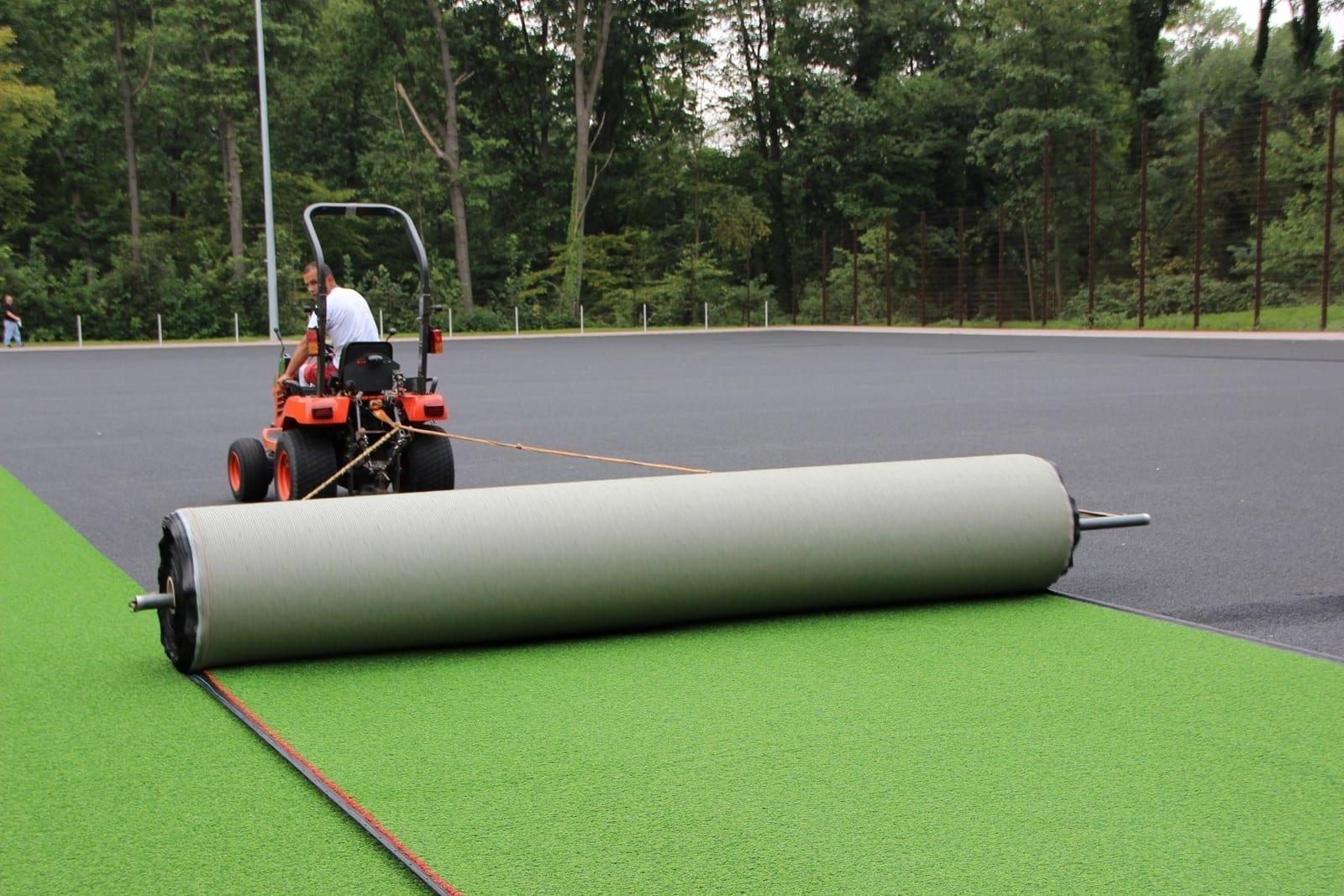Explore the Environmental Conveniences of Opting for Artificial Grass Solutions
The adoption of fabricated grass options presents an engaging possibility to resolve pushing ecological obstacles. By substantially minimizing water usage and lessening the application of dangerous chemicals, these alternatives not only promote sustainable landscaping yet also safeguard local communities. Additionally, the lower carbon impact connected with lowered maintenance activities adds to a much more sustainable technique to land monitoring. Nonetheless, the effects of these benefits extend beyond mere conservation efforts, increasing questions concerning their lasting influence on environment preservation and general environmental balance. Checking out these measurements reveals an intricate interaction worth thinking about.
Water Preservation Perks
One of the most substantial benefits of fabricated lawn is its ability to conserve water. In contrast, synthetic grass does not need watering, significantly reducing the total demand for water resources.
By getting rid of the need for routine watering, fabricated turf adds to lasting landscape techniques and assists minimize the ecological influence of excessive water consumption. Moreover, the preservation of water encompasses the reduction of runoff, which can lead to soil erosion and waterway contamination.
In addition, the installation of man-made lawn enables house owners and towns to allocate water resources more successfully, concentrating on important uses such as alcohol consumption water and agriculture. The shift in the direction of artificial lawn not just promotes responsible water usage but additionally lines up with wider environmental goals targeted at preserving natural sources.
As neighborhoods increasingly focus on sustainability, the water preservation benefits of synthetic grass present a compelling instance for its fostering in domestic and business landscaping jobs.
Reduced Chemical Use
The transition to fabricated lawn considerably decreases the dependence on chemical therapies commonly used in all-natural yard upkeep. Traditional lawn administration generally includes the application of plant foods, herbicides, and chemicals to advertise growth and control pests. These chemicals can posture threats to human wellness, neighborhood wild animals, and the environment, adding to dirt and water contamination.
On the other hand, synthetic lawn eliminates the need for these hazardous substances. When set up, it calls for marginal maintenance, mostly consisting of normal cleaning and occasional infill replenishment. This decrease in chemical use not just benefits the instant atmosphere however also adds to more comprehensive eco-friendly security. By lessening the release of synthetic substances right into the ecosystem, man-made turf advertises healthier dirt and water systems.
Furthermore, the lack of chemical overflow linked with artificial turf installments helps shield neighborhood waterways from contamination, supporting marine life and preserving biodiversity. Arizona artificial turf. As neighborhoods progressively focus on lasting practices, selecting artificial turf presents a practical service that aligns with environmental conservation goals. Through this change, residential property owners can appreciate rich eco-friendly rooms without jeopardizing environmental wellness, leading the means for a more lasting future
Lower Carbon Impact

Additionally, the installation of artificial grass can result in substantial water conservation. All-natural yards call for considerable quantities of water for watering, which not just includes in the carbon footprint linked with water removal and therapy but likewise stress neighborhood water resources. In comparison, fabricated turf requires marginal upkeep, needing no watering, thus substantially decreasing water usage and its linked energy prices.
Furthermore, the durability of man-made grass adds to its reduced carbon influence. With a lifespan of as much as 15 years or even more, the requirement for frequent replacements is reduced, leading to less waste and lower energy usage in production and taking care of traditional yard alternatives. Overall, synthetic grass offers a sustainable choice for ecologically aware landscaping.
Environment Preservation
Habitat preservation is a critical consideration in the discussion over landscaping selections, specifically when contrasting synthetic grass to natural turf. Natural turf lawns usually need comprehensive maintenance, consisting of the use of pesticides, plant foods, and herbicides, which can adversely affect local communities. These chemicals can seep right into the dirt and rivers, harming indigenous flora and animals and interfering with neighborhood habitats.
On the other hand, synthetic grass provides an opportunity to minimize the ecological impact of landscaping. By selecting synthetic yard, house owners you could try these out can minimize the disturbance of natural habitats connected with typical yard care practices. Synthetic grass removes the requirement for dangerous chemicals, thereby shielding nearby wild animals and keeping the integrity of surrounding environments. Furthermore, the setup of artificial turf can bring about the conversion of previous turf areas right into even more biodiverse landscapes, such as pollinator yards or native plant locations, which can sustain neighborhood wildlife.
Ultimately, the change to synthetic grass not just conserves water and minimizes upkeep initiatives yet likewise cultivates a much more unified relationship in between human activities and the native environment, promoting habitat conservation while doing so.
Long-Term Sustainability
Long-term sustainability is an essential aspect in reviewing the benefits of synthetic grass over conventional lawn yards. One of one of the most considerable benefits of man-made turf is its longevity; it can last approximately 15-20 years with minimal maintenance, whereas all-natural lawn requires frequent reseeding and substitute. This durability decreases the need for continuous sources, such as water, plant foods, and chemicals, which are necessary for preserving a healthy and balanced turf lawn.
In addition, synthetic grass contributes to a reduction in carbon discharges connected with grass treatment devices. Typical lawns often require gas-powered mowers, leaners, and blowers, all of which add to air contamination. Artificial turf companies phoenix. On the other hand, synthetic grass eliminates the demand for such tools, advertising a cleaner atmosphere
Moreover, the production of synthetic Continue lawn significantly utilizes recycled materials, boosting its sustainability profile. As suppliers embrace eco-friendly methods, the environmental footprint of artificial lawn continues to diminish.

Final Thought
The adoption of synthetic lawn services presents significant environmental advantages, including considerable water preservation, lowered reliance on harmful chemicals, and a lower carbon footprint. Moreover, fabricated lawn aids in protecting natural habitats by minimizing land disturbance and advertising long-lasting sustainability via the use of sturdy products. Collectively, these elements highlight the possibility of synthetic grass to contribute positively to ecological wellness and use a viable choice to conventional landscape design methods in an increasingly resource-conscious world.
In contrast, synthetic turf does not need watering, significantly decreasing the total need for water resources. By lessening the launch of synthetic substances right into the ecological community, fabricated grass advertises much healthier dirt and water systems.
Furthermore, the installation of synthetic lawn look these up can result in considerable water preservation. In comparison, artificial turf requires marginal maintenance, requiring no watering, therefore considerably lowering water use and its connected energy costs.

Comments on “Expert Arizona Turf Providers Ensuring a Lifelike Lawn Alternative”